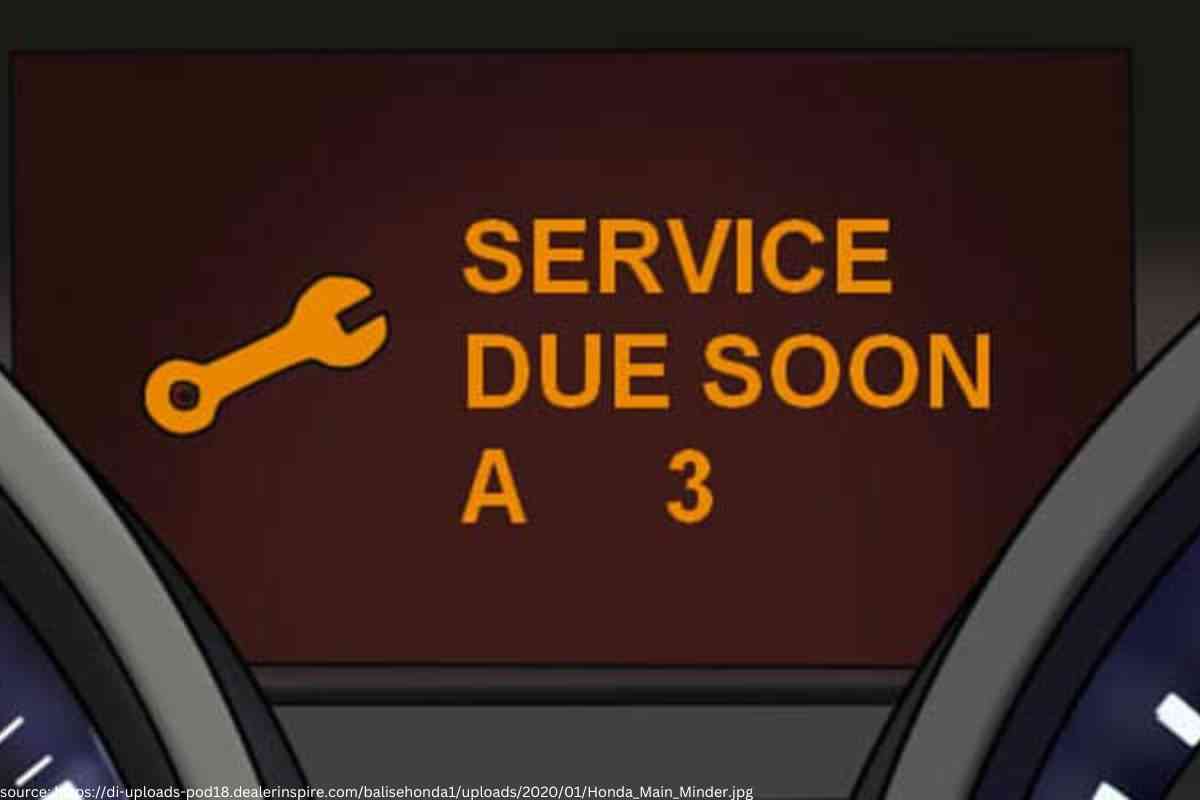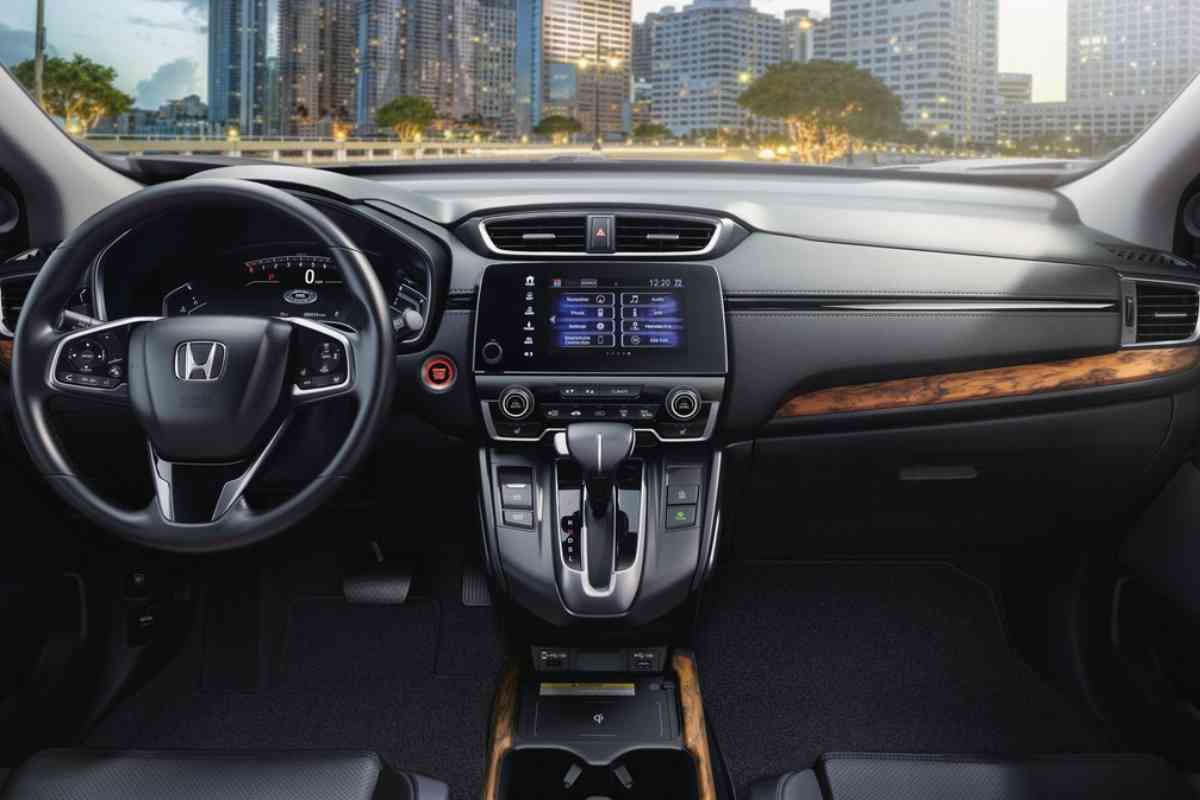Honda CRV Maintenance Codes: What You Need to Know
The Honda CR-V is a popular compact SUV that has been around since 1995. It is known for its reliability, practicality, and fuel efficiency. To keep your Honda CR-V running smoothly, it is important to follow the recommended maintenance schedule, which includes regular oil changes, tire rotations, and other services.

What are Honda CRV Maintenance Codes?
Honda CRV Maintenance Codes are a series of codes that appear on the vehicle’s dashboard to notify the driver when maintenance is due. These codes are part of the Maintenance Minder System, which monitors the engine’s operating conditions to determine when the vehicle needs an oil change or other regular maintenance.
The Honda Maintenance Minder system is designed to make it easy for you to keep track of when your vehicle needs maintenance. The system uses codes to indicate what type of service is required, such as oil changes, tire rotations, or brake inspections.
These codes are displayed on your dashboard, and you can check the owner’s manual to see what each code means. By following the Maintenance Minder system, you can help ensure that your Honda CR-V stays in top condition and avoid costly repairs down the road.
Troub le figuring out your CRV dash lights/ We’ve got you covered; check out our guide to the CRV check engine light!
Understanding Honda CRV Maintenance Codes
The codes are divided into two main categories: “A” and “B.” The “A” code indicates that an oil change is due, while the “B” code indicates that additional maintenance is required, such as a transmission fluid change or a brake inspection.
Some vehicles may have additional sub-codes that provide more specific information about the required maintenance.
Why are Honda CRV Maintenance Codes Important?
Honda CRV Maintenance Codes are important because they help ensure that the vehicle is properly maintained and running efficiently. By following the Maintenance Minder System, drivers can avoid costly repairs and extend the life of their vehicle. Additionally, keeping up with regular maintenance can help improve fuel economy and reduce emissions.
How to Read Honda CRV Maintenance Codes

To read Honda CRV Maintenance Codes, drivers should refer to their vehicle’s owner’s manual or consult with a certified Honda technician. The Maintenance Minder System uses a series of codes to indicate when maintenance is due, with each code corresponding to a specific maintenance item.
For example, the “A1” code indicates that an oil change is due, while the “B12” code indicates that it’s time for an oil change, a tire rotation, and a brake inspection. Drivers can check their Maintenance Minder System by pressing the “i” button on the steering wheel to cycle through the different codes.
In conclusion, Honda CRV Maintenance Codes are an important tool for ensuring that your vehicle is properly maintained and running efficiently.
By following the Maintenance Minder System, drivers can avoid costly repairs and extend the life of their vehicle. If you’re unsure about how to read or interpret the codes, consult with a certified Honda technician for guidance.
Common Honda CRV Maintenance Codes
Honda CRV Maintenance Minder system is designed to help you keep track of your vehicle’s regular maintenance needs. The system uses codes to indicate the type of service your vehicle needs. Here are the most common Honda CRV Maintenance Codes you should know.
Honda CRV Maintenance Code A1
Code A1 indicates that it’s time for an oil change. This code typically appears when the engine oil life is at 15% or less. It’s important to change the oil and oil filter to keep your engine running smoothly.
Honda CRV Maintenance Code B1
Code B1 means it’s time for an oil change and tire rotation. This code typically appears when the engine oil life is at 15% or less, and it’s been about six months since the last oil change. Tire rotation is important to ensure even wear on your tires and extend their lifespan.

Honda CRV Maintenance Code 1
Code 1 indicates that it’s time for a tire rotation. This code typically appears when it’s been about six months since the last tire rotation. Regular tire rotation helps ensure even wear on your tires and extends their lifespan.
Honda CRV Maintenance Code 2
Code 2 means it’s time for an air filter replacement. This code typically appears when the air filter is clogged and needs to be replaced. A clean air filter improves engine performance and fuel efficiency.
Honda CRV Maintenance Code 3
Code 3 indicates that it’s time for a transmission fluid replacement. This code typically appears when the transmission fluid is dirty or has exceeded its service life. Regular transmission fluid changes help extend the life of your transmission.
Honda CRV Maintenance Code 4
Code 4 means it’s time for a spark plug replacement. This code typically appears when the spark plugs have reached the end of their service life. Replacing the spark plugs helps ensure proper engine performance and fuel efficiency.
Honda CRV Maintenance Code 5
Code 5 indicates that it’s time for a timing belt replacement. This code typically appears when the timing belt has reached the end of its service life. Replacing the timing belt helps prevent engine damage and ensures proper engine performance.
Honda CRV Maintenance Code 6
Code 6 means it’s time for a rear differential fluid replacement. This code typically appears when the rear differential fluid is dirty or has exceeded its service life. Regular rear differential fluid changes help extend the life of your rear differential.
Honda CRV Maintenance Code 7
Code 7 indicates that it’s time for a brake fluid replacement. This code typically appears when the brake fluid is dirty or has exceeded its service life. Regular brake fluid changes help ensure proper brake performance and prevent brake system damage.
Honda CRV Maintenance Code 8
Code 8 means it’s time for a coolant replacement. This code typically appears when the coolant is dirty or has exceeded its service life. Regular coolant changes help prevent engine damage and ensure proper engine performance.
Honda CRV Maintenance Code 9
Code 9 indicates that it’s time for a front differential fluid replacement. This code typically appears when the front differential fluid is dirty or has exceeded its service life. Regular front differential fluid changes help extend the life of your front differential.
Honda CRV Maintenance Code 10
Code 10 means it’s time for a valve adjustment. This code typically appears when the valves are out of adjustment and need to be adjusted. Proper valve adjustment helps ensure proper engine performance and fuel efficiency.
Honda CRV Maintenance Schedule
The Honda CRV is a reliable and popular SUV that requires regular maintenance to keep it running smoothly.
The maintenance schedule for the Honda CRV is designed to ensure that the vehicle remains in optimal condition. Here are some important things to know about the Honda CRV maintenance schedule.
When to Perform Regular Maintenance
Regular maintenance is necessary to keep your Honda CRV running smoothly. The maintenance schedule for the Honda CRV is broken down into two types of services: A and B.
Service A is recommended every 7,500 miles or every 12 months, whichever comes first. Service B is recommended every 15,000 miles or every 12 months, whichever comes first.
The maintenance schedule for the Honda CRV includes the following services:
- Oil and filter change
- Tire rotation and balance
- Brake inspection and adjustment
- Fluid level check and top-off
- Cabin air filter replacement
- Engine air filter replacement
- Spark plug replacement
- Timing belt replacement (if equipped)
How to Keep Track of Maintenance Schedule

It is important to keep track of the maintenance schedule for your Honda CRV to ensure that the vehicle remains in optimal condition. You can keep track of the maintenance schedule by using the Maintenance Minder system.
The Maintenance Minder system is designed to remind you when your vehicle needs maintenance based on your driving habits and conditions.
When the Maintenance Minder system alerts you that it is time for maintenance, you should take your vehicle to a qualified mechanic to have the necessary services performed. You can also consult your owner’s manual for more information on the maintenance schedule for your Honda CRV.
Dealership vs. Independent Mechanic
When it comes to maintaining your Honda CRV, you have the option of taking it to a dealership or an independent mechanic. Both options have their advantages and disadvantages.
Dealerships have trained technicians who are familiar with the specific needs of your Honda CRV. They also have access to genuine Honda parts and equipment. However, dealership services can be more expensive than independent mechanics.
Independent mechanics may be less expensive than dealerships, but they may not have the same level of expertise or access to genuine Honda parts and equipment. It is important to do your research and choose a qualified mechanic who has experience working with Honda vehicles.
In conclusion, following the maintenance schedule for your Honda CRV is essential to keep your vehicle running smoothly. By performing regular maintenance, keeping track of the maintenance schedule, and choosing a qualified mechanic, you can ensure that your Honda CRV remains in optimal condition for years to come.
Honda CRV Fluid Maintenance
When it comes to maintaining your Honda CRV, one of the most important things you can do is keep up with fluid maintenance. Regularly changing your vehicle’s fluids can help extend its lifespan and keep it running smoothly. In this section, we’ll discuss the three main fluids you should keep an eye on: oil, transmission fluid, and brake fluid.
Oil Change
Oil changes are an essential part of vehicle maintenance. The Honda CRV’s maintenance minder system will alert you when it’s time for an oil change. Typically, the system will recommend an oil change every 7,500 miles, but this can vary depending on your driving habits and conditions.
When it’s time for an oil change, it’s important to use the recommended oil type and viscosity for your Honda CRV. Refer to your owner’s manual for the recommended oil type and viscosity.
Transmission Fluid
Transmission fluid is another important fluid to keep an eye on. The Honda CRV’s maintenance minder system will alert you when it’s time to change your transmission fluid. The system will recommend a transmission fluid change every 30,000 miles.

Brake Fluid
Brake fluid is a crucial component of your vehicle’s braking system. The Honda CRV’s maintenance minder system will alert you when it’s time to change your brake fluid. Typically, the system will recommend a brake fluid change every three years.
When changing your brake fluid, it’s important to use the recommended type of fluid. Refer to your owner’s manual for the recommended type of fluid and follow the manufacturer’s instructions for replacing the fluid.
In summary, keeping up with fluid maintenance is an important part of maintaining your Honda CRV. Regularly changing your vehicle’s fluids can help extend its lifespan and keep it running smoothly. Be sure to follow the manufacturer’s recommendations for fluid type and replacement intervals to ensure your vehicle stays in top condition.
Honda CRV Maintenance Tips
Maintaining your Honda CRV is essential to ensure its longevity and reliability. Regular maintenance not only extends the life of your vehicle but also helps you save money in the long run. In this section, we will provide you with some tips on how to extend the life of your Honda CRV and save money on maintenance.
How to Extend the Life of Your Honda CRV
Here are some tips to help you extend the life of your Honda CRV:
- Follow the recommended maintenance schedule in your owner’s manual. This includes regular oil changes, tire rotations, and other routine maintenance tasks.
- Keep your Honda CRV clean. Regularly wash and wax your vehicle to protect its paint and prevent rust.
- Avoid overloading your Honda CRV. Overloading can cause excessive wear and tear on your vehicle’s suspension, brakes, and other components.
- Drive carefully. Avoid aggressive driving, hard braking, and sudden acceleration to reduce wear and tear on your vehicle’s engine and transmission.
- Check your tire pressure regularly. Underinflated tires can cause poor fuel economy, uneven tire wear, and decreased handling and braking performance.
How to Save Money on Honda CRV Maintenance
Here are some tips to help you save money on Honda CRV maintenance:
- Do some maintenance tasks yourself. Simple tasks like changing your air filter, replacing your wiper blades, and checking your tire pressure can be done at home with minimal tools and knowledge.
- Shop around for the best prices on parts and labor. Don’t be afraid to get quotes from multiple repair shops before deciding where to take your vehicle.
- Use aftermarket parts instead of OEM parts. Aftermarket parts can be just as reliable as OEM parts and are often much cheaper.
- Consider purchasing a Honda CRV maintenance plan. A maintenance plan can help you save money on routine maintenance tasks and unexpected repairs.
By following these tips, you can extend the life of your Honda CRV and save money on maintenance. Remember to always follow the recommended maintenance schedule and take care of your vehicle to ensure its reliability and longevity.

Conclusion
In conclusion, understanding the Honda CRV maintenance codes is crucial for keeping your vehicle in top condition. The Maintenance Minder System uses the onboard computer to monitor engine operating conditions and determine when an oil change and regular maintenance is necessary. The system displays a code on the dashboard, indicating the type of maintenance required.
It is important to note that the maintenance codes are not just suggestions. They are based on the actual condition of the vehicle and its components. Ignoring these codes can lead to serious problems, such as engine damage, decreased fuel efficiency, and more costly repairs down the line.
To ensure that your Honda CRV stays in top condition, it is recommended to follow the maintenance schedule outlined in your owner’s manual. This includes regular oil changes, air filter replacements, and other routine maintenance tasks. By staying on top of these tasks and addressing any issues indicated by the maintenance codes, you can help extend the life of your vehicle and avoid costly repairs in the future.
Overall, the Honda CRV maintenance codes are an essential tool for keeping your vehicle running smoothly and efficiently. By staying informed and proactive about your vehicle’s maintenance needs, you can enjoy a safe and reliable driving experience for years to come.

What does A27 mean on crv dash
Davis, thanks for your message. Here is the answer. My understanding is you read the CRV dash codes one by one. A27 is A,2,7.
A – engine oil should be replaced.
2 – Replace air cleaner element, inspect drive belt, and replace dust and pollen filter.
7 – Replace brake fluid.
Hope this helps.
what does A137 mean
where is a list of the codes and what they mean?